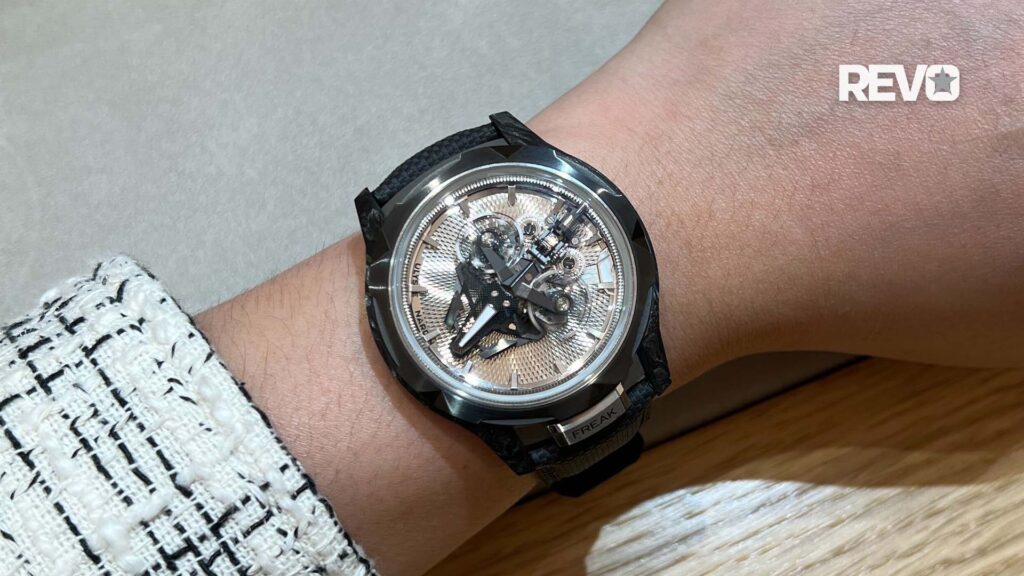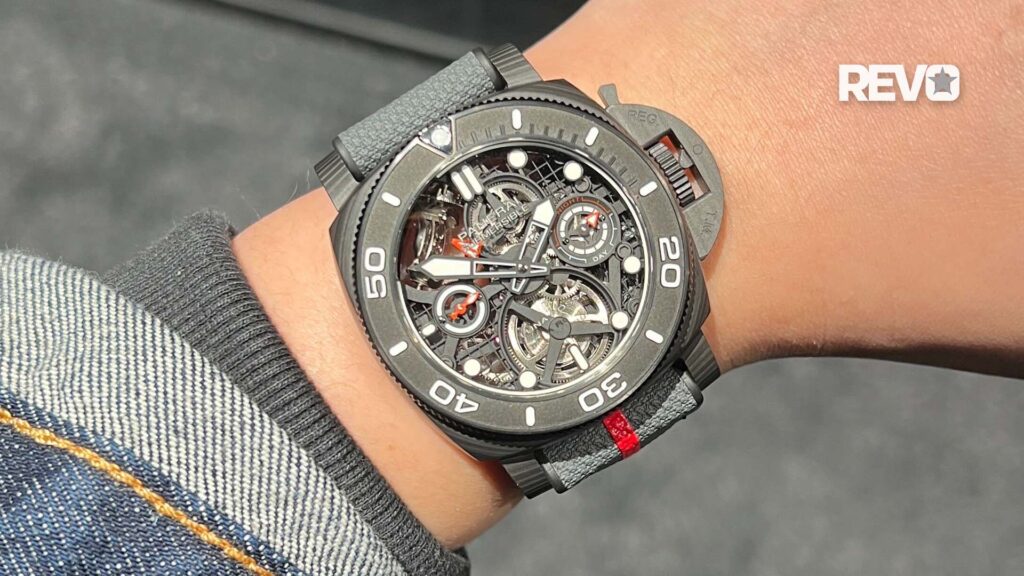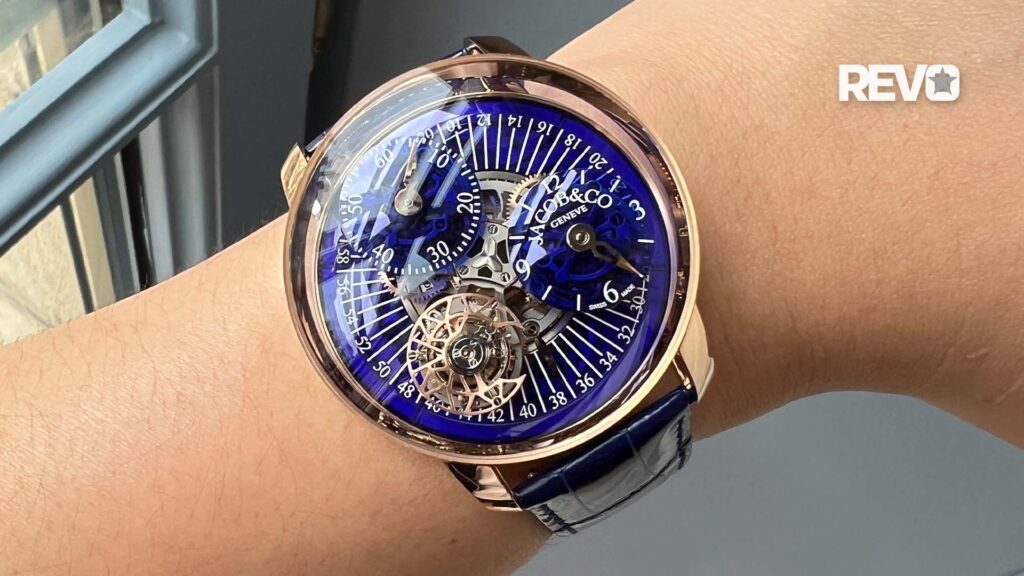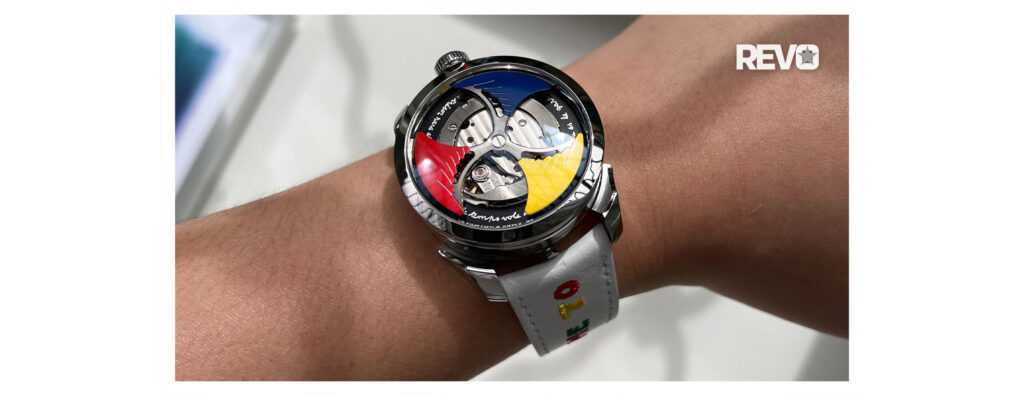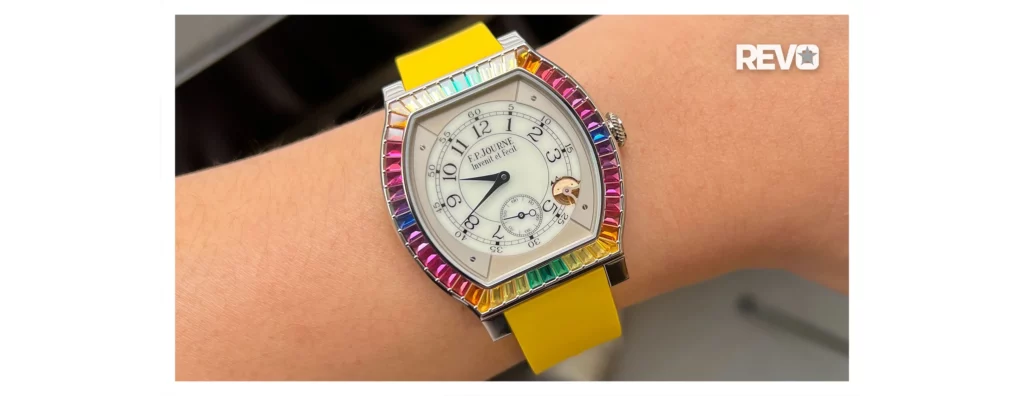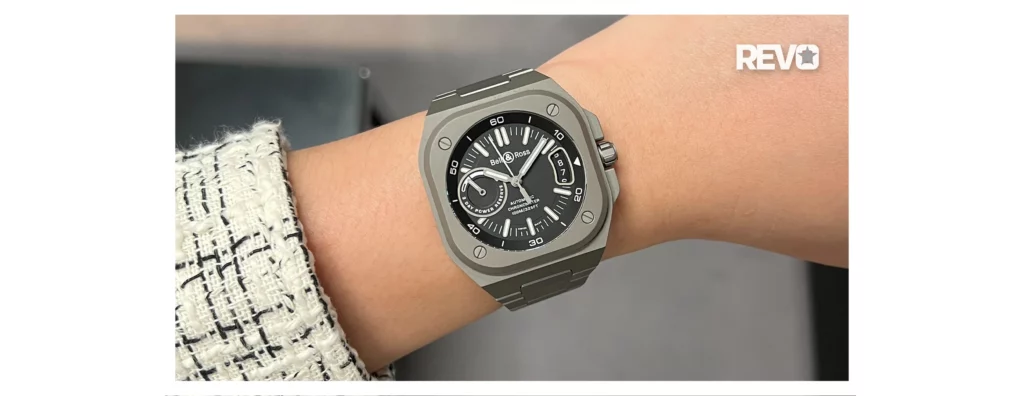Audemars Piguet
The Evolution Of Watch Advertising Though The Years
You can build the greatest, most magnificent watches in the world, but the bottom line is that the watch industry is still a profit sector, and money needs to be made in order to survive and continue to create great and magnificent watches. One way of doing that is to let the general public know how great and magnificent the watches that you make actually are. Advertising in selective newspapers and magazines have always been one of the favorite ways in which watch brands deliver this message. The way these advertisements have been set up has developed over the years, and has resulted in quite some extraordinary ads.
 The 1930’s approach, like the one above from Longines, was quite practical. A tasteful display of a representative part of the current collection was often complimented by additional information about the watch and even included in many cases, the price. As practical it might be, it could possibly prompt people who were looking for a watch and seeing one they liked, to go to the store and purchase one. It did not really appeal to the emotions of the potential watch buyer, nor were they very memorable.
The 1930’s approach, like the one above from Longines, was quite practical. A tasteful display of a representative part of the current collection was often complimented by additional information about the watch and even included in many cases, the price. As practical it might be, it could possibly prompt people who were looking for a watch and seeing one they liked, to go to the store and purchase one. It did not really appeal to the emotions of the potential watch buyer, nor were they very memorable.
 Rolex changed this with their famous ad featuring a lady with her hand in a fish bowl, with a Rolex on her wrist. A waterproof watch was still quite extraordinary in the 1930’s and Rolex-founder Hans Wilsdorf capitalized on this with a very way of communicating this. To coincide with this ad, he gave Rolex dealers a fish bowl in which they could display a Rolex watch, creating a direct link between the ad and real-life. This would convince even skeptical customers that the ad was not just for show.
Rolex changed this with their famous ad featuring a lady with her hand in a fish bowl, with a Rolex on her wrist. A waterproof watch was still quite extraordinary in the 1930’s and Rolex-founder Hans Wilsdorf capitalized on this with a very way of communicating this. To coincide with this ad, he gave Rolex dealers a fish bowl in which they could display a Rolex watch, creating a direct link between the ad and real-life. This would convince even skeptical customers that the ad was not just for show.
 Educating the public about achievements and accomplishments of your watches is a way of advertising that is still being practiced today. In their ad from 1953, Vacheron Constantin even went as far as not showing a watch, merely using instead a textual explanation of their accomplishments in the 1952 Chronometer competitions.
Educating the public about achievements and accomplishments of your watches is a way of advertising that is still being practiced today. In their ad from 1953, Vacheron Constantin even went as far as not showing a watch, merely using instead a textual explanation of their accomplishments in the 1952 Chronometer competitions.
 Larger portions of text in advertisements have been used throughout the years to sell watches. Not a bad idea, since people are already reading a magazine, and more text means that you can explain more in-depth about what sets your brand apart from the rest. In the example above Rolex does this particularly well by first drawing attention to with a catchy headline and also displaying the watch in question. An interesting detail is that even now, decades later, Sir Jackie Stewart can still be spotted quite frequently with a Rolex around his wrist.
Larger portions of text in advertisements have been used throughout the years to sell watches. Not a bad idea, since people are already reading a magazine, and more text means that you can explain more in-depth about what sets your brand apart from the rest. In the example above Rolex does this particularly well by first drawing attention to with a catchy headline and also displaying the watch in question. An interesting detail is that even now, decades later, Sir Jackie Stewart can still be spotted quite frequently with a Rolex around his wrist.
 Visual spectacle was another way of trying to attract attention from readers. This 1959 Hamilton ad tries to amplify the then high-tech nature of the Hamilton Electric with futuristic drawings. Although it can be difficult to understand that these images once sold watches, when living in an age of digital camera’s, Instagram and photoshop, in the 1950’s, especially in the United States, this approach certainly worked well.
Visual spectacle was another way of trying to attract attention from readers. This 1959 Hamilton ad tries to amplify the then high-tech nature of the Hamilton Electric with futuristic drawings. Although it can be difficult to understand that these images once sold watches, when living in an age of digital camera’s, Instagram and photoshop, in the 1950’s, especially in the United States, this approach certainly worked well.
 Watches are emotional objects, and some can even help to conjure a fantasy. These kind of fantasies sell cars, clothes and almost any other kind of consumer good. Just as many cigarette brands did over the years, many watch brands also played up the idea of an adventurous lifestyle, oftentimes being much more intense than what most customers actually had. One great difference; the watches turned out to be a quite less lethal than the cigarettes. Rolex appealed to a different kind of lifestyle with their 1968 Rolex Submariner ad. Although most the Submariners sold would be denied this “Dirk Pitt” kind-of-lifestyle, it does offer customers a way to connect with it. This even despite the fact that the most “action” these watches would see, would probably would the kind you’d find in court, a boardroom or the bedroom. Even in the 1960’s Rolex still published prices on some of their advertisements….if you could only travel back in time to purchase one!
Watches are emotional objects, and some can even help to conjure a fantasy. These kind of fantasies sell cars, clothes and almost any other kind of consumer good. Just as many cigarette brands did over the years, many watch brands also played up the idea of an adventurous lifestyle, oftentimes being much more intense than what most customers actually had. One great difference; the watches turned out to be a quite less lethal than the cigarettes. Rolex appealed to a different kind of lifestyle with their 1968 Rolex Submariner ad. Although most the Submariners sold would be denied this “Dirk Pitt” kind-of-lifestyle, it does offer customers a way to connect with it. This even despite the fact that the most “action” these watches would see, would probably would the kind you’d find in court, a boardroom or the bedroom. Even in the 1960’s Rolex still published prices on some of their advertisements….if you could only travel back in time to purchase one!
 Even in more recent times exclusive watches are connected to equally exclusives professions and activities. The chances that a Zenith-owner will pilot his own corporate jet is probably much higher than if he were to command a fighter jet, but selling watches essentially selling dreams that tell time. With a quote of Nietzsche, Zenith also appeals to the intellectual side of its customers, while at the same time cleverly amplifying the visual image of the fighter jet, adventurous young man and of course the Zenith sports watch.
Even in more recent times exclusive watches are connected to equally exclusives professions and activities. The chances that a Zenith-owner will pilot his own corporate jet is probably much higher than if he were to command a fighter jet, but selling watches essentially selling dreams that tell time. With a quote of Nietzsche, Zenith also appeals to the intellectual side of its customers, while at the same time cleverly amplifying the visual image of the fighter jet, adventurous young man and of course the Zenith sports watch.
 Perhaps even more effective in this case, is when the man in the ad is a world famous movie star. Breitling has been featuring John Travolta in their ad campaign’s for years. Travolta is known as a very avid aviation enthusiast, licensed to fly a wide variety of different aircraft and even owns a house connected to a runway so he only has to taxi his Boeing 707, parked next to his house, a short way to get airborne. Since this is fairly common knowledge it makes the connection between Breitling, a brand who closely associates itself with the world of aviation, and Travolta more powerful.
Perhaps even more effective in this case, is when the man in the ad is a world famous movie star. Breitling has been featuring John Travolta in their ad campaign’s for years. Travolta is known as a very avid aviation enthusiast, licensed to fly a wide variety of different aircraft and even owns a house connected to a runway so he only has to taxi his Boeing 707, parked next to his house, a short way to get airborne. Since this is fairly common knowledge it makes the connection between Breitling, a brand who closely associates itself with the world of aviation, and Travolta more powerful.
Of course featuring celebrities in watch ads is nothing new. Take for example this unusual 1983 add for Omega featuring Robert Wagner, who was then at the top of his fame as Jonathan Hart in the hit TV-show “Hart to Hart”. The choice for the suave Wagner might be obvious, especially given his suave appearance, but the choice for take-out Chinese “when you can have whatever you want” might not be…
 Using celebrities in ads also comes at a price. Not only do celebrities require compensation for featuring them but sometimes the whole thing can backfire when the celebrity enters the news in less than favorable ways. When dealing with active people of flesh and blood there is always that possibility and for that reason some brands prefer to showcase their link with important historical figures. Of course you need to have had significant clientele in the past whose fame has carried over centuries, but for a brand like Breguet, that is no problem. The fame of Napoleon Bonaparte is more than sufficient today to create that “I-want-the-same-watch-as-Napoleon”-vibe while at the same time clearly confirms Breguet’s rich history as a watchmaker of importance.
Using celebrities in ads also comes at a price. Not only do celebrities require compensation for featuring them but sometimes the whole thing can backfire when the celebrity enters the news in less than favorable ways. When dealing with active people of flesh and blood there is always that possibility and for that reason some brands prefer to showcase their link with important historical figures. Of course you need to have had significant clientele in the past whose fame has carried over centuries, but for a brand like Breguet, that is no problem. The fame of Napoleon Bonaparte is more than sufficient today to create that “I-want-the-same-watch-as-Napoleon”-vibe while at the same time clearly confirms Breguet’s rich history as a watchmaker of importance.
 Another watch brand that can look back at an imposing history is Patek Philippe, yet in their ads they are often looking forward to the future, emphasising the timeless craftsmanship of their products. In the past this was channeled to (potential) customers with the phrase “Your great-granson may wear this watch”.
Another watch brand that can look back at an imposing history is Patek Philippe, yet in their ads they are often looking forward to the future, emphasising the timeless craftsmanship of their products. In the past this was channeled to (potential) customers with the phrase “Your great-granson may wear this watch”.
Today this saying has been overhauled into the more catchy phrase “You never actually own a Patek Philippe. You merely look after it for the next generation”. Although true for nearly all well made, mechanical watches, Patek Philippe has been able to truly make this phrase its own. This also means that Patek really knows its customers. They know that they value long standing traditions and are inclined to start their own for the right reason, and a nice Patek combined with the idea of leaving behind something for their offspring is often all the inclination they need.
 Yet not all brands showcase their history, despite the fact that they have plenty of it. Actually, IWC shows in the ad above not even a watch, simply what seems to be a past time for watchmakers; playing darts with tweezers. A very powerful image that shows the skill and dedication needed to make high end watches. Funny and powerful, this is an image that sticks with people.
Yet not all brands showcase their history, despite the fact that they have plenty of it. Actually, IWC shows in the ad above not even a watch, simply what seems to be a past time for watchmakers; playing darts with tweezers. A very powerful image that shows the skill and dedication needed to make high end watches. Funny and powerful, this is an image that sticks with people.
 Another powerful image is that of Bernie Ecclestone, who in 2010 got mugged and his watch stolen. With black eye he featured in a Hublot ad. again a very powerful image showing the lengths that lengths that people will go to obtain a Hublot. Of course we will never know if the mugger actually knew that Ecclestone was wearing a Hublot, or that he just expected an expensive watch. This approach does show the originality of Hublot when it comes to watches, and mimics that of what they put in their watches.
Another powerful image is that of Bernie Ecclestone, who in 2010 got mugged and his watch stolen. With black eye he featured in a Hublot ad. again a very powerful image showing the lengths that lengths that people will go to obtain a Hublot. Of course we will never know if the mugger actually knew that Ecclestone was wearing a Hublot, or that he just expected an expensive watch. This approach does show the originality of Hublot when it comes to watches, and mimics that of what they put in their watches.
 The same can be said of this IWC ad where they draw a parallel between the complexity of their DaVinci perpetual calendar chronograph and women. A rather bold move for the already established brand to market their watch like this, since the might alienate some potential customers for their ladies models.
The same can be said of this IWC ad where they draw a parallel between the complexity of their DaVinci perpetual calendar chronograph and women. A rather bold move for the already established brand to market their watch like this, since the might alienate some potential customers for their ladies models.
 Rolex opted to move the other way and emphasizes the fact that many of their Datejust models are also great for women to wear. This ad campaign came together with a catalog dedicated to Datejust models suitable for women that also incorporated some of the larger Datejust models. Given the fact that quite a few women can now be seen with Rolex-models around their wrist previously marketed to men, you can wonder if the ad helped setting this trend or that it was acknowledging its existence for a larger group of women.
Rolex opted to move the other way and emphasizes the fact that many of their Datejust models are also great for women to wear. This ad campaign came together with a catalog dedicated to Datejust models suitable for women that also incorporated some of the larger Datejust models. Given the fact that quite a few women can now be seen with Rolex-models around their wrist previously marketed to men, you can wonder if the ad helped setting this trend or that it was acknowledging its existence for a larger group of women.
As much as the world of watches isn’t a dull place, neither are the advertisements that feature them. Since we are now well within the new Renaissance of mechanical watchmaking, with more brands that want to draw your attention, a whole new approach is needed to make an impact on the internet and within social media. Certainly, we are destined to see some more developments in watch advertisement in the upcoming years!
Martin Green
Eclectic taste in Haute Horlogerie, passion for diamond set watches, loves the classics
Read Revolution International Digital Editon on iPad, Android or desktop with the Zinio newsstand app.
Also, please follow us on Facebook, Youtube, Flickr and Twitter






